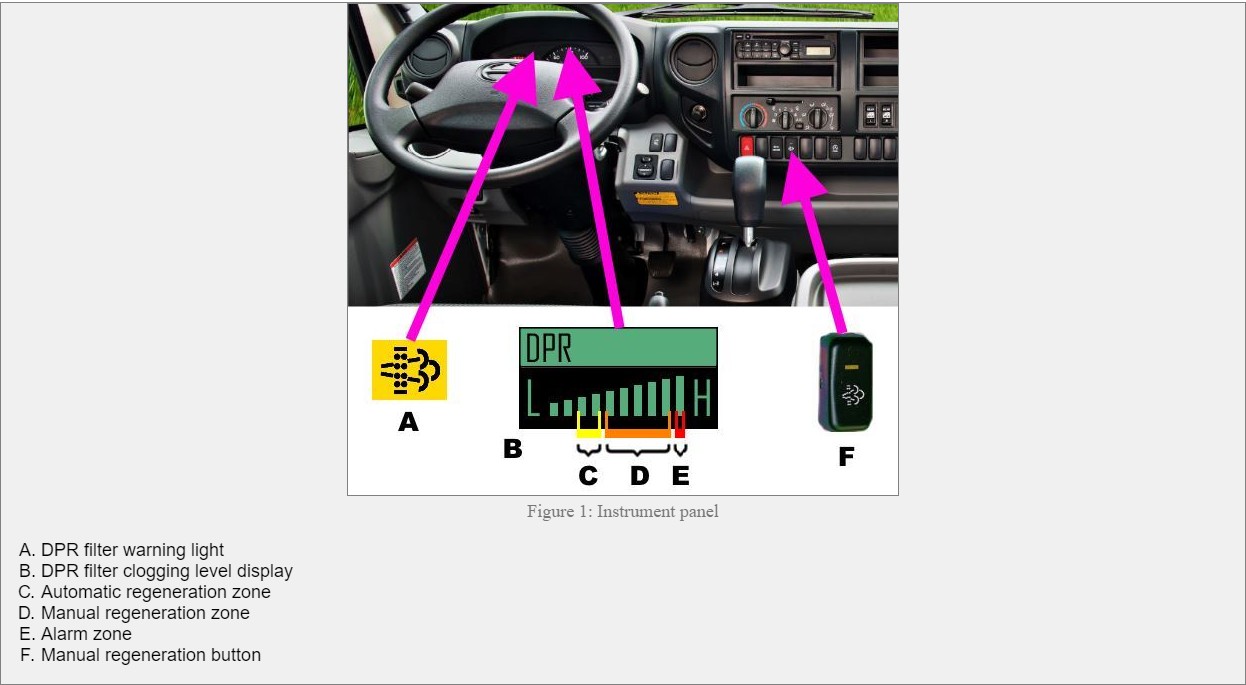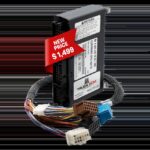The Diesel Particulate Reduction (DPR) system, found in many industrial vehicles, plays a crucial role in minimizing harmful particulate emissions. When the “Dpr Regen In Progress” message appears, it signifies that the DPR filter is undergoing a cleaning process known as regeneration. This article delves into the intricacies of DPR regeneration, outlining its importance, different types, and how to manage it effectively.
What is DPR and Why is Regeneration Necessary?
DPR, similar to a Diesel Particulate Filter (DPF) with an integrated oxidation catalyst, traps soot and particulate matter from the engine exhaust. Over time, this accumulation restricts exhaust flow and hinders engine performance. Regeneration, a process of burning off the trapped soot, is essential to maintain optimal filter function and emission control. The “DPR regen in progress” status indicates this cleaning is actively occurring.
Understanding DPR Filter Clogging
Determining the DPR filter’s clogging status is crucial for initiating timely regeneration. Some vehicles feature a dedicated display indicating the level of clogging with a series of notches. While the first few notches represent minimal clogging requiring no action, higher levels necessitate manual or forced regeneration to prevent further issues and potential damage to the DPR system. The “DPR regen in progress” message may be accompanied by warning lights or gauge indications.

Low Clogging Levels (Notches 1-4): Automatic regeneration occurs, requiring no driver intervention. “DPR regen in progress” may be briefly displayed.
Moderate to High Clogging (Notches 5-9): Manual regeneration is required. Ignoring this can lead to further clogging and necessitate forced regeneration.
Critical Clogging (Notch 10): Manual regeneration is no longer possible. Forced regeneration using diagnostic tools is mandatory. Continued operation may result in irreversible damage. “DPR regen in progress” will not be displayed in this critical state, as a different error message indicating system failure may appear.
Types of DPR Regeneration
There are three primary DPR regeneration strategies:
1. Automatic Regeneration
This occurs passively during normal vehicle operation, utilizing the built-in oxidation catalyst and specific engine mappings to increase exhaust gas temperatures and burn off accumulated particulate matter. You might notice a slight increase in engine noise and idle speed during this process. “DPR regen in progress” may be briefly displayed.
2. Manual Regeneration
When automatic regeneration is insufficient due to consistent low-speed driving or frequent stop-and-go traffic, manual regeneration becomes necessary. This involves initiating a specific procedure outlined in the vehicle’s manual, often involving parking the vehicle in a safe location and activating a regeneration button. “DPR regen in progress” will be displayed during this process.
Caution: Exhaust gas temperatures during manual regeneration are extremely high. Adhere to all safety precautions to prevent fire hazards.
3. Forced Regeneration
If manual regeneration requests are ignored and clogging reaches a critical level, forced regeneration using diagnostic equipment is required. This process involves connecting the vehicle to a diagnostic tool and initiating a forced regeneration sequence. “DPR regen in progress” will typically not be displayed during this procedure, as the system is in a critical state requiring specialized intervention.
Conclusion
Understanding the “DPR regen in progress” message and the different regeneration types is crucial for maintaining the health of your vehicle’s DPR system. Regular monitoring of the filter’s clogging status and adhering to recommended regeneration procedures will ensure optimal engine performance, minimize emissions, and prolong the lifespan of the DPR filter. Consult your vehicle’s manual for specific instructions on performing manual regeneration.

